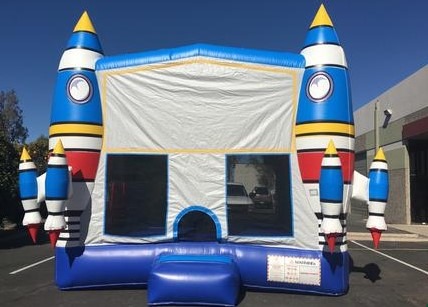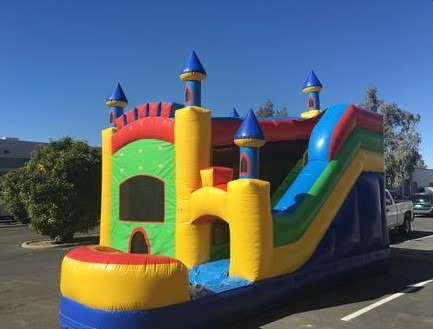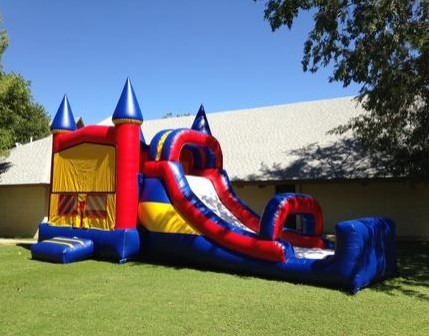Business
Pros and Cons of Owning a Bounce House Business: A Detailed Guide

The allure of the bounce house business beckons many entrepreneurial spirits. This thriving industry is marked by smiles, laughter, and the joyful energy of children at play. Yet, like any business venture, it comes with its unique set of challenges. Let’s dive into the exciting world of inflatable fun to explore the pros and cons of owning a bounce house business.
Table of Contents
The Pros of Owning a Bounce House Business

1. Profitability Potential
One of the most enticing aspects of the bounce house rental business is its potential profitability. Demand for bounce houses is high, driven by countless birthdays, carnivals, and community events throughout the year. With good management, marketing strategies, and customer service, your bounce house business can achieve impressive returns on investment.
2. Low Startup Costs
Starting a bounce house business doesn’t require a significant upfront investment compared to other industries. You don’t need a brick-and-mortar location, and the initial inventory of bounce houses can be expanded gradually as your business grows.
3. Flexibility
As a bounce house business owner, you have the freedom to set your schedule, choose your clients, and decide on your business model. This flexibility can offer a better work-life balance compared to traditional 9-to-5 jobs.
4. Growth Opportunities
The inflatable rental business is not limited to bounce houses alone. As your business expands, you can diversify your inventory with inflatable slides, obstacle courses, and interactive games, opening up new markets and growth opportunities.
The Cons of Owning a Bounce House Business

1. Seasonality and Weather Dependence
The bounce house business is highly dependent on weather and seasonal events. Inclement weather or off-peak seasons can significantly affect your bookings and revenue.
2. Competition
The relative ease of entry into the bounce house business can mean high competition in some areas. To stand out, you will need innovative marketing strategies and unique selling propositions.
3. Safety Regulations and Insurance
Operating a bounce house business comes with significant safety responsibilities. You’ll need to stay up-to-date with safety regulations, ensure your equipment is well-maintained, and invest in comprehensive insurance to protect your business and customers.
4. Maintenance and Cleaning
Bounce houses require regular cleaning and maintenance to ensure safety and longevity. This task can be labor-intensive and time-consuming, but it’s essential to keep your inventory in top-notch condition.
5. Customer Satisfaction
Providing an exceptional experience for your customers is not only good business practice but also a potent marketing tool. Happy customers become repeat customers and often generate valuable word-of-mouth referrals. To ensure customer satisfaction, focus on delivering high-quality, clean, and safe bounce houses and offer excellent customer service.
6. Innovative Industry Trends
The bounce house industry is always evolving with new designs, themes, and interactive elements. By staying abreast of industry trends and innovations, you can offer exciting new products that keep customers coming back.
7. Physical Labor
Setting up and tearing down bounce houses can be physically demanding. It involves heavy lifting and can be particularly challenging in adverse weather conditions.
8. Inventory Investment
While the initial startup costs can be relatively low, as your business grows, so will the need for more bounce houses and various inflatables. This necessary investment can be quite substantial.
9. Logistics and Transportation
Bounce houses are large and heavy. Transporting, setting up, and tearing down these structures requires a reliable vehicle, potentially increasing your operational costs.
Frequently Asked Questions About the Bounce House Business
1. How much does it cost to start a bounce house business?
Startup costs for a bounce house business can vary based on factors like the number and quality of bounce houses you purchase, transportation costs, insurance, and marketing expenses. A typical range might be $10,000 to $50,000.
2. What are the safety regulations for operating a bounce house business?
Safety regulations vary by location, so it’s crucial to check with local authorities. In general, you’ll need to follow guidelines on proper installation, weight limits, and weather conditions.
3. What marketing strategies are effective for a bounce house business?
Effective marketing strategies include leveraging social media, offering promotions, partnering with local businesses and event planners, and providing exceptional customer service to encourage word-of-mouth referrals.
4. What insurance is needed for a bounce house business?
Insurance coverage typically includes general liability, property insurance, and commercial auto insurance. Some businesses also opt for workers’ compensation if they have employees.
Owning a bounce house business can be a thrilling, rewarding venture. With the potential for high profits, low startup costs, and the joy of creating memorable events, it’s easy to see why many are drawn to it. However, it’s crucial to understand the challenges that come with this industry, such as seasonality, competition, safety regulations, and maintenance needs. Informed preparation and strategic planning can help you navigate these hurdles and set you up for success.
5. How can I grow my bounce house business?
Growing your bounce house business involves several strategies, including expanding your product offerings, exploring new markets (such as corporate events or festivals), improving your marketing efforts, and cultivating partnerships with local businesses or event planners.
6. What are the potential pitfalls of Pros and Cons of Owning a Bounce House Business?
Potential pitfalls include increased competition, changing safety regulations, equipment damage or failure, and fluctuations in demand due to seasonality or weather conditions.
7. How can I maintain and clean my bounce houses effectively?
Regular maintenance involves inspecting your bounce houses for any damage, cleaning them with suitable cleaning products, and ensuring they are completely dry before storage to prevent mildew. It’s also essential to follow the manufacturer’s instructions for care and maintenance.
Also Read: Unleashing the Power of Pros and Cons of Osteostrong
Conclusion
Pros and Cons of Owning a Bounce House Business can be a profitable and rewarding venture, offering flexibility and growth opportunities. However, it’s not without its challenges. Understanding these pros and cons can help you make an informed decision and prepare a successful business plan. As with any business, success in the bounce house industry requires passion, commitment, strategic planning, and excellent customer service. If you’re ready to take the plunge, the world of inflatable fun awaits you!

-

 Health5 years ago
Health5 years agoAdvantages and Disadvantages of Milk
-

 Tech4 years ago
Tech4 years ago6 Tips to Improving E-Commerce Websites
-

 Home5 years ago
Home5 years agoAdvantages and Disadvantages of Village Life in Points
-

 Travel5 years ago
Travel5 years agoAdvantages and Disadvantage of Travelling
-

 Sports3 years ago
Sports3 years agoThe benefits of playing an online live casino
-

 Tech5 years ago
Tech5 years ago10+ Advantages and Disadvantages of Mobile Phones in Points
-

 Tech5 years ago
Tech5 years agoEssay on Advantages and Disadvantages of Offline Shopping
-

 Tech5 years ago
Tech5 years ago8+ Advantages and Disadvantages of Motorcycle |Having Bike